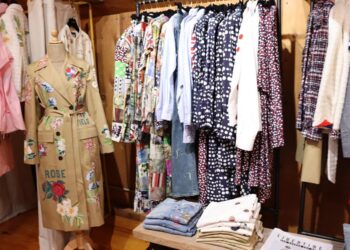
From January 15 through February 27, The Drawing Room is pleased to present SNOW DAY, a group exhibition organized in association with Eric Brown Art Group. Works on view range from Wilson A. Bentley’s rare photomicrographs of snow crystals to 20th and 21st century snowscapes by Jennifer Bartlett, Charles Burchfield, Jack Bush, Lois Dodd, Jane Freilicher, Hector Leonardi, Aubrey Levinthal, Kathryn Lynch and Fairfield Porter.
On January 15, 1885, the amateur meteorologist Wilson A. Bentley discovered a technique to capture the unique crystalline structure of individual snowflakes. Mesmerized by snowfall since childhood, he later reflected on this groundbreaking moment: “It was the best day of my life.” Nearly 150 years later, the physical presence and fleeting effects of snowfall continue to inspire contemplation. This exhibition juxtaposes photographs, paintings and works on paper by ten artists who harnessed the evanescence and calm induced by a landscape blanketed in white.
Wilson A. Bentley [1865—1931] Nine vintage black-and-white snowflake photographs created by Bentley around 1900 are the earliest works on view. Raised on a working farm in Jericho, Vermont where annual snowfall averaged 120 inches, Bentley’s fascination with snow prompted him to spend endless hours examining the forms of frozen crystals under magnification. Searching for a means other than pencil drawing to render their myriad forms, he ultimately developed photomicrographs, enduring frigid outdoor temperatures while equipped with a feather, microscope and large format camera. Bentley devoted the remaining decades of his life to tracking the relationship between storm conditions and structural variations of snowflakes, publishing his expertise in scientific journals and producing over 5000 photographs, most of which are preserved in museum collections.
Jennifer Bartlett [b.1941]
Since the 1970s, when Bartlett’s pioneering paintings first attracted critical acclaim, the artist’s work has been widely shown and collected. She graduated from Mills College and received her MFA from Yale University. Her work is included in the collections of the Cleveland Art Museum, the Los Angeles County Museum of Art, The Metropolitan Museum of Art, the Museum of Modern Art and the Tate Modern.
Known for her rigorous studio practice, Bartlett developed a system early in her career to sustain a drawing routine wherever she traveled. Whether vacationing by the sea or in the mountains, she had her classical drawing materials shipped ahead so she could immediately explore the visual possibilities of her new surroundings. Sun Valley, December-January 7 (1996-97) is a tour de force pastel that reveals her masterful handling of the medium and keen sensitivity to the topography and weather conditions that engaged her.
Charles Burchfield [1893—1967]
One of the most inventive and influential American painters of the 20th century, Burchfield is best known for his expressive depictions of the rural landscapes of central Ohio and upstate New York. During his youth, he developed a deep affinity for the natural world that shaped the intensely personal sensibility of his paintings. While attending the Cleveland School of Art from 1912-1916, Burchfield studied European and American Modernism, as well as Chinese and Japanese art. Snow Scene with Black Tree (c. 1916) reveals the young artist’s integration of his formal training, and the emergence of the fluid mark-making that would distinguish his iconic late masterpieces.
Burchfield’s work is represented in museum collections nationwide. Numerous museum exhibitions focused on his work include a show of early watercolors at the Museum of Modern Art in 1930, and retrospectives at the Albright-Knox Gallery (1944), the Whitney Museum of American (1956, 1980 and 2002), the Metropolitan Museum of Art (1990), and the Columbus Museum of Art (1997).
Jack Bush [1909—1977]
Born in Toronto, Bush worked as a commercial artist, taking night classes at the Ontario College of Art. Winter Sunlight (1945) was painted early in his career, when his work reflected the representational style of the Group of Seven (1920-1933), Canadian landscape painters who preceded him. In 1954, Bush became a member of the Painters Eleven
(1953-1960), a circle of 11 Toronto artists who joined together to promote abstract painting. During this period, he met the influential American art critic Clement Greenberg. One of Canada’s most celebrated modernist painters, Bush became closely associated with the Color Field movement and post-painterly abstraction after turning to abstraction in the 1950s.
Lois Dodd [b. 1927]
For more than fifty years Dodd has painted the immediate surroundings of her homes in New York City, Maine and the Delaware Water Gap. Winter Sunlight and Ice in Cove are exemplary small-scale paintings that reflect the artist’s plein-air approach to capturing transient light effects with an economy of means. Equally succinct, the commanding canvas, Delaware Water Gap in Winter, evokes a more expansive mountain vista with broad brushwork and streamlined forms reminiscent of the American Modernist Arthur Dove. Dodd’s work has been featured in over fifty solo museum and gallery exhibitions. Her paintings are part of many museum collections, among which are the Cooper Hewitt Museum, the Farnsworth Art Museum, the Museum of Modern Art and the Whitney Museum of American Art.
Jane Freilicher [1924—2014]
Freilicher attended Brooklyn College and received her MA from Columbia University, after which she studied painting with the influential teacher Hans Hofmann. Her works are in the permanent collections of the Whitney Museum of American Art, the Museum of Modern Art and the Cleveland Museum of Art, among others. Like many of her fellow New York School contemporaries in Manhattan, Freilicher spent several months a year on Long Island’s East End, where she and her husband built a home in 1960. Overlooking Mecox Bay in Watermill, her studio there provided varied landscape vistas throughout the seasons. When Freilicher approached the wintry landscape, she usually worked from direct observation and on a small scale, instilling in her compositions the immediacy of fresh snow. Bare branches, wispy grasses and evergreen foliage allowed for interesting contrasts to expanses of white, while subtle atmospheric conditions hovered above the horizon.
Hector Leonardi [b.1930]
Leonardi attended Rhode Island School of Design as an undergraduate before completing his MFA at Yale University where he studied color theory and painting with the influential teacher, Josef Albers. His work has been widely exhibited both in the United States and internationally and is represented in numerous private and museum collections. Leonardi began spending time on Long Island’s East End in the 1970s, renting a house on the cliffs of Montauk with 360° views of the ocean. While teaching at the Parsons School of Design throughout the following two decades, he divided his time between Long Island and Manhattan and maintained a studio in the city’s bustling flower district. He now lives in Bridgehampton, where his light-filled studio in a converted potato barn is bordered by gardens and farmland. His abstractions are informed by a deep appreciation for the natural environment. The title of his 2021 painting, Nevicata suits the swirling motion of large white dabs of paint, silhouetted against a field of deep grey.
Aubrey Levinthal [b.1986]
Levinthal received an MFA from the Pennsylvania Academy of Fine Arts and a BA from Penn State University. A resident of Philadelphia, she has been awarded multiple grants and has shown in New York, London and Berlin. This year, her work will be included in an exhibition at Boston’s Institute of Contemporary Art.
Her paintings highlight quotidian subjects, most frequently interior views populated by her family and friends in compressed spaces that merge figure and ground. Levinthal’s palette is muted, dominated by diffuse layers of thin, semi-transparent washes; she paints and scrapes down with a razor. The serene composition of Winter Sink (2021) balances strong monochromatic shapes and an urban view with a delicate still life of domestic objects.
Kathryn Lynch [b.1961]
After undergraduate studies at William Smith College, Lynch completed her MFA at the University of Pennsylvania followed by a residency at the Skowhegan School of Painting & Sculpture. She was the recipient of a 2018 NYSCA/NYFA Fellowship among other awards and residencies, and her work is shown widely throughout the United States. Lynch imbues her memory-based paintings with a lush sensibility and lyrical freedom, translating visual experiences and atmospheric effects into quirky and spontaneous compositions. Her moonlit nocturnes capture flickering points of light and a distinct sense of wonder and nostalgia.
Fairfield Porter [1907-1975]
Porter was born in Winnetka, Illinois and attended Harvard University before moving to New York City to study at the Art Students League. His work has been the subject for numerous museum exhibitions, including a posthumous retrospective at the Whitney Museum of American Art. Esteemed as both an art critic and a painter, he spent most of the year in Southampton, New York where his family’s South Main Street home and garden became central subjects. Winter Landscape (Snow) (1958-61) depicts the tranquility of wintertime in the Long Island village, with spreading tree branches articulated by snow in the foreground and vernacular architecture suggested in the distance.
For more info, visit Drawingroom-gallery.com






